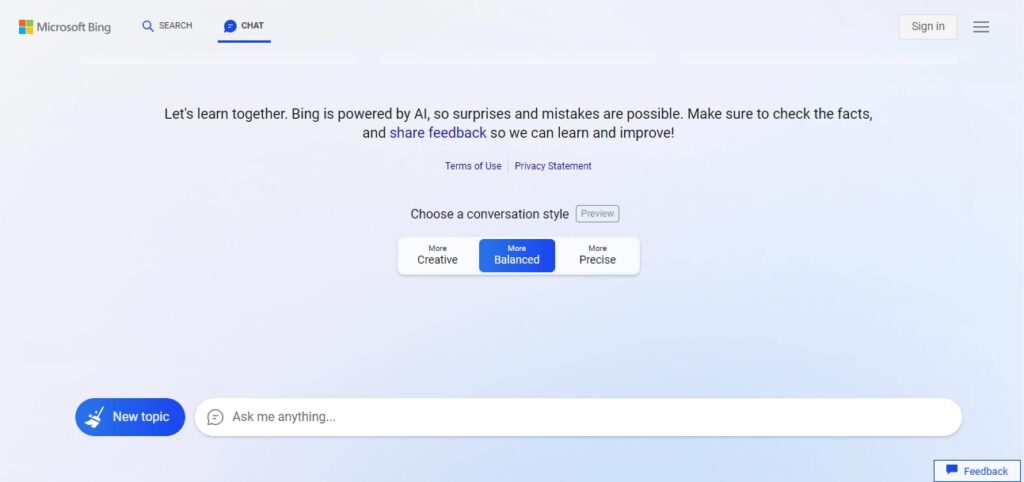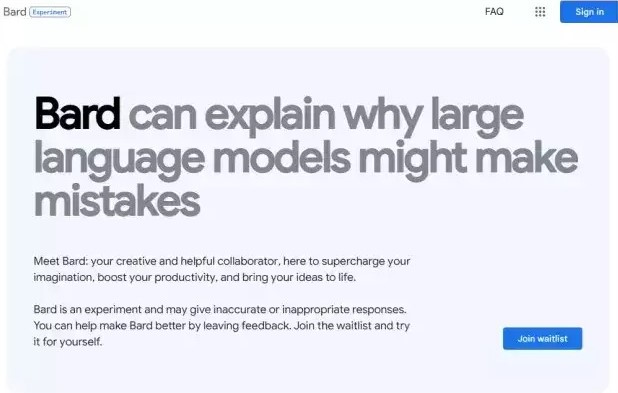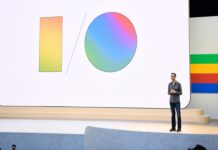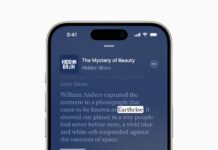The evolution of search engines has been a crucial part of the internet venture, with users counting on them to sort through the overwhelming dose of info obtainable online. Nevertheless, with the advent of extensive language models, like ChatGPT, the future of search is disputable. Besides, by subsidizing $10 billion in OpenAI in 2023, Microsoft assured sole access to an enriched version of ChatGPT for their search engine. Regardless, recent declarations have affirmed that Bing is using the GPT-4 Model, which is presently the most advanced language model available. Meanwhile, Google has unveiled its chat-enabled search tool, Bard.
Despite the hype, the public demos of these chat-enabled search engines have shown that they are far from perfect. The LLMs can make rudimentary errors and even confidently make things up when they don’t know the answer which in artificial intelligence call Hallucination.
This has ushered to debate among experts about whether chat-based LLMs are even suitable for search engines. Some believe that they may work well for complex queries without direct answers. While others argue that they are unnecessary for simple searches.
Also Read- How Can I Access Bard AI On Google?
Tech Giants’ Battle for AI Dominance: Microsoft’s Bing Outperforms Google’s Bard
The launch of Google’s Bard and Microsoft’s Bing, both powered by generative AI. This highly anticipates a fierce battle between tech giants. Nevertheless, the launch did not live up to expectations. Microsoft and OpenAI’s ChatGPT-like model obtained clear and powerful praise from CEO Satya Nadella. While Google’s version was muffled and error-prone.
Despite hopes for close competition, Microsoft triumphed the PR victory with its assertive messaging and confident CEO. Meanwhile, Google’s launch stood marred by unforced errors. It included a missing mobile phone during a demo and a costly error in an ad promoting Bard’s talents. Therefore, caused the company’s stock value to drop by over $100 billion.
Let’s do a comparison between Google’s Bard and Microsoft’s AI-incorporated Bing to better analyze the ongoing completion.
Also Read- ChatGPT, Google Bard, Microsoft Bing- How They Are Similar But Yet Different
Google’s Bard and Microsoft’s AI-incorporated Bing are based on Completely different Language Models
Bard Based On LaMDA
Bard is Google’s new chatbot, which aspires to permit users to brainstorm and answer questions. In contrast to Bing Chat, Bard does not sneak a peek at search results, and all the info it feeds is generated exclusively by the model.
Bard is built on top of a recent version of LaMDA or Language Model for Dialogue Applications. It is Google’s flagship large language model. Additionally, it is improved via reinforcement learning through user feedback, a method that teaches a big language model to respond in increasingly helpful and negligibly harmful ways.
With 137 billion parameters and access to 1.56 trillion words, dialogue data, and online documents, LaMDA is extensively trained. Furthermore, it remains fine-tuned to prioritize three crucial parameters – Safety, Quality, and Groundedness – in generating responses. Its distinctive strength lies in its dialogue-specific training, which sets it apart from other language models. According to Scale AI’s Riley Goodside, LaMDA’s responses are more authentic and closer to human speech than ChatGPT, facilitating integration with diverse applications like Workspace, Google Assistant, and even the search engine itself.
Also Read- Everything You Want To Know About Google Bard
Microsoft Bing uses Open AI’s GPT-4 Model
Conversely, Microsoft made consequential updates to their Bing search engine by adding chatbot capability under the moniker “the new Bing.” The larger language model from OpenAI, which is more advanced than ChatGPT and was specially formulated for search purposes, was used in the building of the new Bing. The product’s terms of service refer to it as “Bing Conversational Experiences.” Microsoft proclaimed that OpenAI’s GPT-4 is the tech behind Bing Chat recently in March.
OpenAI’s latest language model system is called GPT-4, succeeding its previous version, GPT 3.5, which powered the well-known ChatGPT chatbot at its release in November 2022. Generative Pre-trained Transformer, abbreviated as GPT, is a kind of language model that employs deep learning methods to produce text that is conversational and similar to that generated by humans.
Due to its multimodal nature, GPT-4 can handle both image and text inputs and generate natural language outputs. For example, it can analyze uploaded worksheets, answer questions, and even perform calculations based on graph data.
Also Read- 10 Areas Of Your Life That AI Is Likely To Disrupt
Distinct Interface and Features
Both Microsoft Bing and Google Bard have integrated AI-powered chatbots into their search engines. And browsers to equip more conversational and personalized search experiences. Nonetheless, there are some disparities in their interfaces and features.
Microsoft Bing has an expanded search box that can take up to 1,000 characters, authorizing for natural language and whole sentences. Besides, users can jot down an inquiry or prompt and see a ‘chat answers’ box emerge after the traditional list of reference websites, concluding with a ChatGPT-style answer.

Additionally, users can tap on the Chat option in the menu above the results to be presented with a screen reserved entirely for the chatbot, where they can have a conversation with it. Microsoft’s new Edge browser remains further directly connected to the chatbot. Thus, providing a sidebar that scans web pages and lets users ask queries or generate summaries, all in the browser.
On the other hand, Google Bard has a search box with a Facebook-style “what’s on your mind?” prompt that apprehends natural language questions. Users can type in a longer question into the traditional search bar and receive a chatbot-style answer. It’s unclear how Google plans to integrate Bard into its Chrome browser.

Google intends for users to view Bard as a companion to Google Search, rather than a substitute. Positioned beneath Bard’s chat widget, a button reads “Google It.” It encourages users to head to Google Search to check Bard’s answers or find out more. Bard is currently available for free to people in the US and the UK who sign up for a waitlist.
Also Read- How To Create Your Own AI Animated Character With Voice – A Step-By-Step Guide
Why Did Microsoft Bing Receive Praise While Google Bard Was Criticized?
Large language models (LLMs) such as OpenAI’s ChatGPT and Google’s LaMDA have the potential to revolutionize the pathway we search for and find information. However, the failed launch of Google’s Bard received criticism from some Google employees for appearing “rushed and botched”. Despite this, Microsoft’s new Bing, which is based on a more powerful version of ChatGPT and is customizable for search, has faced the same problems as Bard – hallucinations or confident yet made-up answers.
AI critic Gary Marcus believes that the different receptions that Google and Microsoft received for their demos are not rightly explained. He notes that both companies demoed prototypes built around apparently comparable technology facing similar bugs. Yet one presented as a revolution, while the other stood deemed a disaster.
The varying perceptions of Microsoft’s and Google’s LLM launches could attribute to differences in their presentation approaches. Microsoft may have been more forthcoming and prudent about its technology’s restrictions, whereas Google may have exaggerated its potential. Furthermore, Google’s previous issues with user data management could have influenced a more skeptical attitude toward their new technology.
It is important to consider that the consequences of a botched launch may differ depending on the financial standing. And the reputation of the company involved. While Alphabet, the parent company of Google, has a market capitalization of over $1 trillion and a $100 billion loss. It would be notable but not devastating, Microsoft has a market capitalization of approximately $2 trillion. And also renowned for its stability and dependability, which could have played a role in the positive reaction to its latest technology.
Also Read- How To Build Your Own AI Chatbot With ChatGPT API
So, who is leading the AI Chatbot Race?
The battle for AI-powered search dominance between Microsoft and Google took a dramatic turn. Along with Google’s suffering a significant blow to its market value due to an error in its chatbot, Bard. This event highlighted the significance of rigorous testing processes. And Google has been more cautious than Microsoft about its chatbot’s abilities, labeling it as an “experimental” feature.
However, it’s still too early to conclude the merits of their pristine technology. As both companies are still in the premature phases of developing their AI chatbots. Microsoft, with its 9% market share, is the plucky upstart. While Google, with its 84% market share, is the defensive incumbent with more to lose.
Furthermore, according to Microsoft, every percentage point gain in market share translates to an extra $2bn in advertising revenue. Thus, highlighting the lucrative business of ads placed in search results. With Bing’s AI-boosted ability to understand queries with greater depth and engage users in conversation. Microsoft aims to attract advertisers and increase market share. However, Google, with its heavy investment in AI and leading position in search revenues, remains in a strong position.
Mark Riedl, a professor at the Georgia Institute of Technology, believes that the new version of Bing leveraging large language model technology is unlikely to pose a serious threat to Google’s search business. Still, he acknowledges Microsoft’s significant achievement in making search technology a two-way race again. He further said it will be intriguing to observe how events unfold.
Additionally, AI-powered chatbots demand substantial processing power, building cost implications for any market grab, as well as defending a market-leading position. In its most recent quarterly results, Microsoft yielded $3.2bn from search and news advertising, while Google generated $42.6bn in search revenues.
Also Read- Use The AI-Powered Bing Chatbot on The New Bing Search Engine
Final Verdict
In conclusion, Microsoft’s Bing search engine has made significant strides in leveraging AI technology to enhance its search capabilities. However, Microsoft’s achievement in making search technology a two-way race again is noteworthy, and it will be intriguing to witness how things play out in the future. Besides, the cost implications of AI-powered chatbots may furthermore impact any market grab endeavors, along with defending a market-leading position. Microsoft’s recent quarterly results ascertain that it has a prolonged way to go to catch up to Google’s outstanding search revenue figures.


























![The Apex Legends Digital Issue Is Now Live! Apex Legends - Change Audio Language Without Changing Text [Guide]](https://www.hawkdive.com/media/5-Basic-Tips-To-Get-Better-On-Apex-Legends-1-218x150.jpg)










